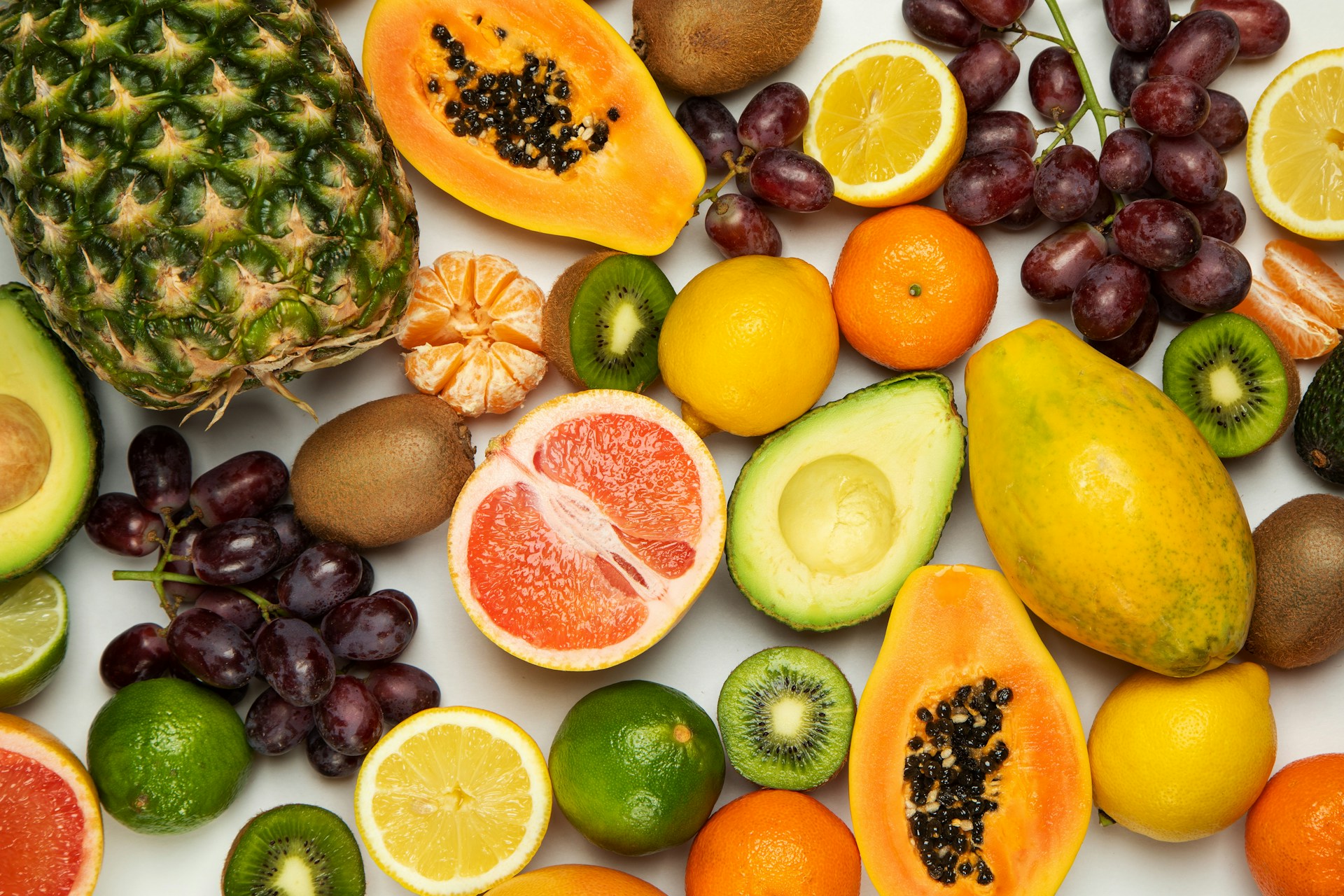In the world of produce processing, maintaining excellent health and safety standards is critical.
Outdated methods can potentially expose consumers to harmful contaminants, posing serious risks.
Fresh developments and advancements in this field strive to mitigate these dangers.
Adherence to modern trends doesn’t just help in compliance; it also streamlines operations and promotes overall efficiency.
The industry continues to innovate, adopting safer practices and state-of-the-art technologies.
Let’s explore how these ongoing changes are reshaping the landscape of produce processing.
Contents
- Health & Safety Trends In Produce Processing
- 1. Increased Use of Advanced Sanitizing Technologies
- 2. Implementation of automated processing tools
- 3. Enhanced Personal Protective Equipment Usage
- 4. Greater emphasis on hand hygiene
- 5. Improved Allergen Management Practices
- 6. Rise in predictive food safety testing.
- 7. Adoption of blockchain for traceability in produce processing
- 8. Advanced Worker Safety Training Programs
- 9. Increased focus on ergonomics and employee health.
- 10. Stricter Food Quality and Safety Regulations
- The Bottom Line
Health & Safety Trends In Produce Processing
1. Increased Use of Advanced Sanitizing Technologies
The health and safety environment in produce processing has seen a surge in the adoption of advanced sanitizing technologies.
These technologies are vital in ensuring that the food produced is free from bacteria, viruses, and various other contaminants that might cause harm to consumers.
The increased use of these technologies is a direct response to the growing concerns over food safety and the stricter food regulations being implemented by authorities.
This has instigated the processing industry to invest significantly in high-tech sanitizing solutions.
Amongst the numerous advanced sanitizing solutions, ultraviolet (UV) sterilization has proven to be quite effective.
UV sterilization exposes food to light at particular wavelengths to kill or inactivate microbes thereby enhancing food safety.
Ozone sanitization is another technology being used in the industry. It not only sanitizes the food but also the environment in which the food is processed, by reducing pathogenic organisms.
On the other hand, electrostatic sanitizing, makes use of static charge to ensure sanitizing solutions stick to surfaces, boosting the sanitization effectiveness.
It is notable that the increased use of these sanitizing technologies is just not restricted to the actual food processing.
These systems are also widely used to sanitize the processing environment, such as the manufacturing spaces, warehouses, and transportation facilities.
The objective here is to create an entire chain that’s maintained at a heightened level of sanitation.
Customer preference towards safer food is driving the push for cleaner and safer processing plants. This surge has led to the implementation of more rigorous sanitizing procedures and technologies.
This trend of increased technological intervention for sanitation is reshaping the food processing industry by not just ensuring food safety, but also enabling various quality improvements.
Thus, advanced sanitizing technologies will continue to be a key investment area for companies in the food processing industry, given the increasing focus on food safety and regulatory compliance.
These technologies make it possible to meet and often surpass regulatory standards, providing businesses with a significant competitive advantage.
2. Implementation of automated processing tools
The second significant trend in the health and safety landscape of produce processing is the implementation of automated processing tools.
Tech-savvy companies have increasingly been utilising machines and robots for tasks previously performed by humans, reducing the potential for human error and improving efficiency and safety.
These automated tools range from sorting machines that segregate produce based on size and quality, to complex robotic systems that can execute intricate tasks such as fruit peeling or vegetable cutting.
In addition to increasing efficiency and consistency, this approach has significant health and safety benefits, reducing the likelihood of food contamination and the risk of workplace injuries.
Automation also allows for detailed tracing of each batch of produce, ensuring any quality issues can be quickly identified and addressed.
While some have expressed concerns about job displacement due to automation, proponents argue that these tools will actually create new roles within the industry, particularly for those skilled in technology and machinery operation and maintenance.
Moreover, automated tasks tend to be repetitive and physically demanding, making them more likely to lead to worker injuries.
By shifting these tasks to machines, produce companies can better ensure worker safety and create a more comfortable working environment.
Furthermore, the preciseness of automated machines can lead to less waste, which combined with speed and efficiency, can result in significant cost savings.
This transition towards automation also allows the industry to keep pace with increasing demand, fulfilling larger orders more quickly and accurately than would be possible with manual processing.
Moreover, automation is not confined to the processing stage – it’s being used in other stages of the supply chain as well, from harvesting to packaging and distribution.
Of course, implementing these systems requires significant investment and planning, but the benefits concerning improved health and safety, as well as increased efficiency and cost savings, make this a compelling trend in the produce processing industry.
Last but not least, with the recent global pandemic emphasizing the need for minimal human contact in food production, the use of automated processing tools can provide a safer, more hygienic alternative.
The rise of automation in the produce processing industry symbolizes the future of food production and is one of the key health and safety trends that is set to shape the industry in the coming years.
3. Enhanced Personal Protective Equipment Usage
Personal Protective Equipment (PPE) refers to wearable equipment designed to protect workers from health and safety risks associated with the jobs they do.
The usage of PPE in the produce processing industry has always been important, but the recent global health crisis has certainly increased the emphasis on PPE.
Among other things, these include gloves, masks, aprons, footwear, and eyewear that protect workers from chemical, biological, and physical hazards.
With the COVID-19 pandemic, PPE usage has expanded to include more sophisticated respiratory protective equipment to minimize the risk of airborne infection.
In the face of the pandemic, companies have established stricter rules for PPE usage and allocated substantial budgets to secure necessary equipment.
Increased usage of PPE is perhaps most visible in the context of face mask usage.
The increased usage of PPE in produce processing not only helps to keep the workers safe but also minimizes the risk of food contamination.
In addition, workers are also required to regularly change their PPE, particularly gloves, to prevent cross-contamination.
Enhanced PPE usage doesn’t just protect workers from injuries and illnesses but also helps to ensure the quality and safety of our food.
Some companies, recognizing the importance of PPE usage, have invested in PPE training programs to guide workers on the correct use of PPE.
PPE training is essential because it’s not enough to just provide workers with PPE; they also need to know how to properly use it for maximum protection.
As a result of these training programs, workers can better understand the importance of PPE not only for their safety but also for the assurance of food safety.
Increased PPE usage has undoubtedly led to an increase in operational costs but most companies are willing to bear these costs for the sake of their workers’ safety and food quality.
As we move forward, it becomes even more important for produce processors to continue emphasizing PPE usage.
After all, the enhanced use of PPE is not only a response to the pandemic situation but also part of a broader trend towards higher health and safety standards in the produce processing industry.
In the future, we can expect more advancements and innovations in PPE which will further improve health and safety in the produce processing industry.
4. Greater emphasis on hand hygiene
Food safety begins with good hygiene practices, and hand hygiene is at the forefront of these measures.
In the wake of the COVID-19 pandemic, the importance of maintaining good hand hygiene in all aspects of life, including within the produce processing industry, has been significantly underscored.
Proper handwashing not only aids in the prevention of spreading disease-causing pathogens, but also plays a vital role in reducing foodborne illnesses.
According to the Centers for Disease Control and Prevention (CDC), an estimated 48 million people in the United States get sick from foodborne diseases annually, with hand hygiene being a key preventative measure.
This emphasizes the role of proper hand hygiene in significantly minimizing the spread of pathogens and reducing the chances of foodborne illnesses.
In the produce processing industry, strict hand hygiene must be observed by all employees, from those handling the raw produce to those involved in packaging.
As such, there is a growing trend of installing more handwashing stations in processing plants, along with implementing strict policies that mandate regular and proper handwashing.
The use of antibacterial hand sanitizers as a secondary line of defense is also becoming more common in these settings.
Training seminars and awareness campaigns that emphasize the importance and techniques of proper hand hygiene are also being conducted more frequently in processing plants.
This increase in educational initiatives is aimed at creating maturity in understanding why personal hygiene is essential in food safety.
Moreover, technology such as electronic hand hygiene monitoring systems is being adopted to ensure compliance with hand hygiene policies and reinforce positive hygiene behaviors.
These systems are capable of providing data that can be used to analyze and improve hand hygiene practices in real-time.
Hand hygiene is a simple yet fundamental practice that can greatly impact the overall health and safety environment within a produce processing facility.
With the increased focus on hand hygiene across the industry, it is clear that this trend is playing an integral part in shaping newer and safer standards of produce processing.
This demonstrates that the produce processing industry is not only committed to the production of safe and quality produce but also to the health and well-being of their consumers and employees.
5. Improved Allergen Management Practices
The topic of allergen management is extremely pertinent within the context of produce processing, where the potential for allergen cross-contamination is a critical concern.
With the ever-increasing number of individuals suffering from food allergies, companies have recognized the importance of allergen control.
Allergen management strategies include investments in allergen-specific equipment and facilities, improved cleaning and sanitization procedures, and thorough employee training on handling allergens.
The rise of sophisticated analytical tools and techniques, such as allergen-specific ELISA kits, has prompted a remarkable improvement in allergen detection and quantification.
Moreover, there has been a significant shift towards allergen testing methodologies to provide precise results.
Allergen labelling regulations are strictly enforced, compelling companies to go a step beyond in verifying the accuracy of their allergen statement.
It’s also worth noting that a robust allergen management program is no longer a choice—it’s a necessity, given the serious health risks for those with allergen sensitivities.
Firms are integrating allergen control throughout their supply chain—a practice commonly referred to as an allergen control plan.
A crucial best practice within the produce processing industry is adopting a systematic approach to control potential allergens, including the evaluation of raw materials, ingredient handling, and product labelling.
The end goal is to establish preprocess, intraprocess, and postprocess checks to control allergen cross-contamination in all stages of produce processing.
Not to mention, the importance of continued staff training to increase awareness and ensure the correct handling processes to minimize allergen risks.
Another trending practice is the use of advanced technology such as blockchain and AI for tracking and tracing allergens across the food chain.
This aids in easy identification of allergen sources and the quick recall of products where necessary, thereby greatly enhancing safety of produce products.
These strategies and developments, collectively, are contributing to the substantial improvement in allergen management practices within the produce processing industry.
As the industry continues to evolve, monitoring and managing allergenic substances effectively will continue to be of paramount importance, reflecting the industry’s commitment to health and safety.
6. Rise in predictive food safety testing.
The health and safety of consumers have always been a paramount concern in the produce processing industry and this concern has led to the rise in predictive food safety testing.
Preventive measures are now prioritized over reactive ones, with predictive food safety testing seen as an effective approach in proactive risk management.
With advanced technologies, predictive testing is now feasible across different stages of produce processing.
Predictive testing methods include microbiological risk assessment, shelf life testing, and predictive microbiology.
Through these tests, potential hazards can be identified earlier, enabling immediate corrective actions to be taken to avert foodborne illnesses.
In addition to that, these predictive tests provide valuable information about a product’s quality, allowing processors to make informed decisions regarding product shelf life.
This information is also crucial in the decision-making process for product recalls, thus potentially saving businesses significant financial resources.
The accuracy and speed of these predictive tests have greatly improved in recent years, thanks to recent developments in sensor technologies and artificial intelligence.
One primary advantage of predictive food safety testing is its ability to predict microbial growth under different conditions.
With the vast amount of data generated through this testing, processors can plan for different scenarios and create strategies to prevent the spread of foodborne pathogens.
Despite its clear benefits, it must be kept in mind that predictive testing is just a piece of the larger puzzle in ensuring food safety in produce processing.
It must be coupled with other food safety practices, such as improved hygiene practices and strict adherence to food quality and safety regulations.
A comprehensive food safety program must be in place, with predictive testing integrated as an essential part of this program.
The rise in predictive food safety testing symbolizes the industry’s overall trend towards highly proactive and data-driven approaches to ensure food safety.
Through enhanced predictive testing, not only the safety but also the quality of the food could be substantially improved, contributing to the overall health and safety trends in produce processing.
7. Adoption of blockchain for traceability in produce processing
Blockchain technology, widely known for its association with cryptocurrency, is now being adopted in multiple sectors to increase transparency and traceability
One of these sectors is produce processing, where safety and health are paramount considerations
A key aspect that makes blockchain a potential game-changer is its ability to provide an immutable and verifiable record of each transaction
With this capability, it’s possible to trace the journey of a certain produce item from the farm to the processing plant, and all the way to consumer’s plate
In using blockchain for traceability, the produce industry can effectively combat food fraud, quickly manage recalls, and significantly enhance food safety
Food fraud, a worldwide problem estimated to cost the industry billions per year, can be minimized by confirming the authenticity of produce through blockchain’s transparent and immutable records
Additionally, in the event of a food recall, blockchain can quickly trace the source of the issue, speeding up the recall process and reducing risks to consumer health
Enhanced food safety is another major benefit, as blockchain can provide information on the conditions under which the food was transported and stored, which directly pertains to its safety and quality
Despite its many benefits, the adoption of blockchain for traceability in produce processing does have some hurdles
One issue is the fact that blockchain technology is still relatively new and understanding it requires a learning curve
It also requires significant investment in technology and training, which may not be in reach for all producers and processors
In addition, since blockchain is a shared ledger, there is a need for all parties in the chain to adopt the technology and agree upon its use and parameters, which can be a logistical challenge
Despite these challenges, the growing emphasis on safety and health in the food industry, and the potential benefits of blockchain technology in enhancing these aspects, are likely to push the produce processing sector towards its adoption
Overall, the adoption of blockchain for traceability presents a great opportunity for the produce processing industry to enhance safety, combat food fraud and efficiently manage potential recalls.
This trend towards technology integration further reflects the proactive approach this industry is taking towards health and safety regulations.
8. Advanced Worker Safety Training Programs
In a world dominated by technology, with constantly evolving scenarios and risks, enhanced worker safety training programs have gained considerable prominence in the produce processing industry.
These advanced safety training programs not only aim to improve the skills of workers handling equipment but they also put significant emphasis on their safety and wellness.
They leverage the power of educational technology such as virtual reality and simulation-based training modules, making it easier and more effective for employees to understand safety protocols.
Through these advanced worker safety training programs, employees are equipped with the necessary knowledge and skills to not only operate their respective machinery, but also to take immediate action in case of emergencies, ensuring minimum harm and maintaining a safe work environment.
These programs are designed to instill a strong safety culture within the company, making safety a lifestyle for everyone involved.
The emphasis on utilizing technology-driven safety training aids in offering an interactive learning experience, thereby simplifying the process of comprehending complex safety protocols.
Periodic refresher courses are also a significant part of these advanced worker safety training programs, ensuring that the workforce is up-to-date with the latest safety guidelines and practices.
Critical safety issues such as handling harmful chemicals, managing allergens, and carrying out sanitation tasks are covered in these safety training sessions.
This helps in mitigating accidents and injury risks, thus, significantly boosting the overall workforce productivity of the organization.
Targeted training modules for specific job roles are also a part of these programs, providing customized training and imparting appropriate safety knowledge pertinent to the varied specifications of the job.
Soft skills like effective communication and stress management, which are essential in ensuring the execution of safety protocols, are are also a focus in these advanced worker safety training programs.
Workers are trained to quickly respond in crisis situations while adhering to a strict health and safety regimen.
The importance of personal hygiene, proper sanitization techniques, and optimum use of Personal Protective Equipment (PPE) are recurrent themes in these trainings.
Regulations and guidelines set by health and safety authorities are fundamentally integrated into the curriculum of advanced worker safety training programs to ensure complete compliance.
Record-keeping is another important aspect of these programs, which not only helps in tracking the progress of workers but also serves as a proof of compliance during inspections.
These advanced worker safety training programs are typically designed with the actual shop floor or the field in mind to ensure that they are relevant, practical, and effective.
9. Increased focus on ergonomics and employee health.
As part of the growing health and safety trends within the produce processing industry, there is a clear and increased emphasis on ergonomics and employee health.
This shift in focus has been driven by several factors, including a growing awareness of the long-term effects of poor ergonomics and the need to nurture a healthy, productive workforce.
In a physical job such as produce processing, focusing on ergonomics and the overall health of the worker can significantly reduce the rates of work-related injuries and thus, increase productivity.
Companies are now employing ergonomic specialists who assess and redesign workstations to ensure that they are not causing stress to the workers’ bodies.
This can involve changes to the height of work surfaces, the positioning of equipment and even the design of tools, all aimed to minimize strain and avoid unnecessary physical stress.
Ergonomic considerations can also extend to the structure of work shifts, with optimum break times and shift lengths being implemented to prevent fatigue and maintain high levels of productivity.
Aside from ergonomics, an increased focus on employee health has been evident in recent years, with businesses investing in numerous strategies.
Healthcare provisions and regular check-ups, healthy catering options, exercise facilities, and mental health resources are just some of the offerings that forward-thinking companies are providing to promote good health among their employees.
This focus on holistic well-being aims not only to reduce the number of work-related illnesses and injuries.
But it also hopes to build a healthier, happier workforce who are more likely to be committed, motivated and productive.
The ongoing COVID-19 pandemic has further highlighted the need for strong focus on employee health in the workplace.
Companies have had to implement strict safety measures and protocols to prevent the spread of the virus among their workforce.
This has further underscored the pivotal role that a healthy workforce plays in maintaining operational continuity and resilience in times of crisis.
There is no doubt that focusing on ergonomics and employee health in the workplace does not just fulfil legal and ethical obligations but can greatly benefit businesses in the long run.
It is an investment in the people who make the industry run, and this trend only looks set to continue to grow in the future.
10. Stricter Food Quality and Safety Regulations
The increased emphasis on food safety and hygiene has led to stricter regulations in the produce processing industry.
These stringent rules are geared towards preventing foodborne diseases which are common with contaminated produce.
One of the significant changes in the regulatory environment is the introduction of comprehensive food safety management systems.
These systems require produce processing facilities to maintain higher standards of cleanliness and sanitation, with non-compliance leading to hefty penalties.
Moreover, food processors are now mandated to adhere to procedural guidelines and recommendations set out by both local and international food safety authorities.
For instance, aspects such as temperature control in storage and transportation, product labelling, and employee hygiene practices are now heavily regulated.
These regulatory measures aim to guarantee that produce is safe for consumption from farm to fork.
To help in the compliance process, many food processing companies are now investing in advanced software solutions that can track, monitor, and document their food safety efforts.
The use of such technologies not only ensures adherence to the set regulations but also improves operational efficiency.
The stricter regulations have also led to a new trend where produce processors are opting for third-party audits to affirm their compliance.
Such audits provide an unbiased review of the company’s food safety programs, fostering consumer trust in their products.
Notably, these audits follow international standards, ensuring that processed produce can access global markets.
Companies are also encouraged to provide their staff with regular training on food safety regulations to ensure they are continually updated on the best practices.
As a result of the stricter food quality and safety regulations, there is a noticeable improvement in the general produce quality in many markets around the world.
In essence, the tighter rules are changing the way the produce processing industry operates, leading to better safety, hygiene, and ultimately healthier consumers.
The Bottom Line
As the food industry rapidly evolves, the adoption of advanced sanitizing technologies, automated processing tools, and improved allergen management practices are pivotal in ensuring food safety and quality.
With the increased use of personal protective equipment and a heightened emphasis on hand hygiene, workers are better equipped to prevent contamination.
Enhanced testing methodologies promise more accurate predictions of food safety, while blockchain technology secures traceability throughout the supply chain.
Furthermore, the introduction of comprehensive safety training programs and stringent regulations help maintain industry standards and protect consumers.
Lastly, a renewed focus on ergonomics and employee health has the potential to boost productivity, shaping a more resilient and sustainable food production sector.
The amalgamation of these comprehensive and integrated efforts shows a promising trend towards a safer, more efficient food industry.




